The name of hybrid tea roses. About the world of plants and country life
Tea roses have been known since the late 18th century. lovely flowers with delicate aroma tea leaves quickly won the love of flower growers in Europe and America. But, unfortunately, growing roses was quite difficult. Tender bushes with soft leaves could not stand the cold, the flowers froze and hurt. French florist Jean-Baptiste André Guyot in 1867 crossed tea rose Madame Vedier with remontant and received the first tea-hybrid rose La France. Today, hybrid tea roses are the most popular and frequently grown of all garden roses.
Hybrid tea roses are very diverse in color, are divided according to the height of the bush from 60 to 150 cm, in the form of a bush - from narrow (in several stems) to sprawling bushes. The diameter of the flowers is from 8 to 15 cm, there can be up to 10 flowers on the stem.
Coloring - from pale white - Virginia, to purplish black Black magic.
There are varieties blue roses – blue moon, there are, changing color during flowering, like Paradise- initially pearly lilac with a delicate pink border, in the process of opening the flowers become deep crimson,
Golden Dragon- dark yellow, the edges of the petals are reddish, capable of changing color to tangerine-canary with a hint of pinkish-cinnamon ocher.
Features of planting and growing
Hybrid tea roses are propagated by grafting or cuttings. They are planted in the autumn before frosts, but it is better - in the spring, in May, when frosts are no longer expected. Seedlings should not have unfolded leaves, the bush should be compact. Before planting, the seedlings are lowered into the water for an hour and a half or two, so that the roots are well saturated with moisture. If possible, the whole plant falls into the water. Previously, several grains of potassium permanganate are dissolved in this water.
The distance between the bushes is from 20 centimeters, planting is done in the morning or in the evening, avoiding direct strong sun rays. The place for the rose garden should be well lit, ventilated. Should not be too dry and too wet. When planting a bush, it is necessary to form an earthen roller so that water is kept near the roots of the plant during irrigation. Saplings spud, mulch the soil.
Roses love enough moisture, but do not tolerate frequent watering therefore, it is necessary to water the rose garden abundantly and protect the soil from drying out. With a lack of water, the flowers will be small and not plentiful.
top dressing
Roses need to be fed, such plants need magnesium, phosphorus, potassium. Too much nitrogen can make plants sick.. Best to alternate mineral supplements with organic. Be sure to feed the flowers after the first abundant flowering, as well as during the formation of bushes in the spring.
pruning
This species needs pruning. The first pruning is carried out in the spring, on a large, well-wintered bush, 5-7 buds are left, on weak bushes 2-4 buds. During the flowering process, it is necessary to cut the flowers from the bushes, but no more than 2 flowers from one bush at a time. Moreover, hybrid tea roses are very good in a bouquet and are ready to please flower growers for a long time.

In autumn, after flowering, before the first frosts, wilted flowers, leaves and tender shoots must be cut off. It is better to burn all cut greens. The cleaned bushes are covered with spruce branches, 20 centimeters cover the root part of the plants with earth or peat. In severe frosts, especially with a small amount of snow, it is necessary to additionally cover the rose garden with covering material. Uncovered plants freeze at - 7 - 10 degrees Celsius.
Good overwintered healthy plants begin to bloom from the 20th of June and bloom until late autumn. The peak of the first flowering occurs in July, then, after some rest, the second flowering time begins.
Diseases and pests
Rust
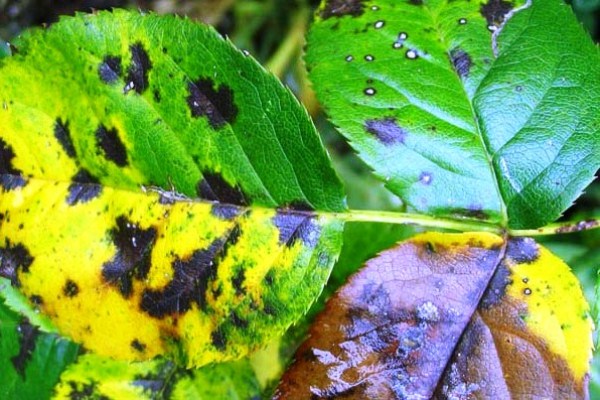
Spores of this type of fungus must first develop in a plant of another species such as juniper.
Do not place in the rose garden plants predisposed to the disease by this type of fungus.
sooty plaque
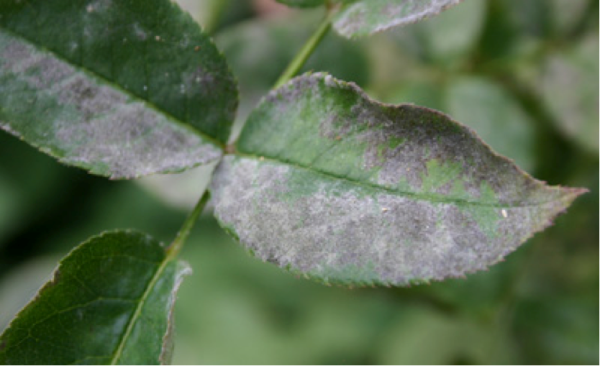
The fungus spreads on aphid secretions, forms a black sticky coating. Spray aphids with a soap-alcohol solution or a special medicine for aphids.
Gray rot

Grayish coating, turning into rotting areas. May be affected bud, flower petals, leaves. Spraying with a decoction of common horsetail helps. Diseased parts of the plant must be removed and burned.
powdery mildew
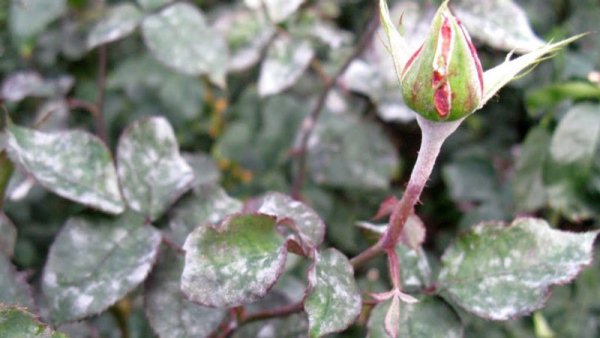
Appears with an excess of moisture. For example, in a rainy summer, mold may appear on the lower part of the leaves in the form brown spots. Rosaries must be ventilated diseased leaves must be destroyed.
leaf rollers
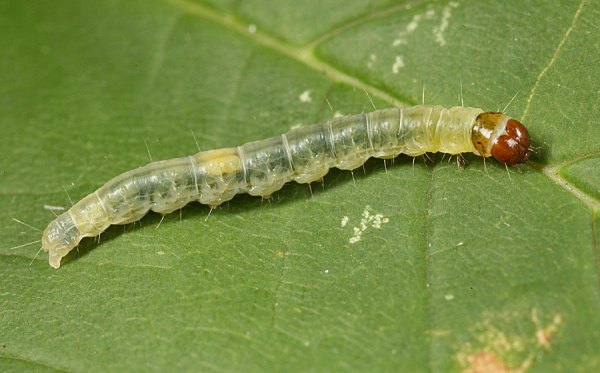
Small caterpillars wintering in eggs laid on leaves in autumn. Leafworms infect the plant, tighten it with a sticky web. For the winter, do not leave foliage on the bushes.
Huge number of varieties will allow you to organize an incomparable rose garden, which will delight you with beautiful colors and incomparable aromas until late autumn.
The classic conical shape of the bud, exquisite aroma, variety of colors, long flowering - all these are the advantages of the hybrid tea rose, which is rightfully considered the queen of the garden.
Beautiful and winter hardy
In the middle of the 19th century, when crossing a remontant and a tea rose, the French breeder Guillot obtained the La France variety, which became the first in the group of tea roses. hybrid roses. The beauty of the exquisite goblet flower and the aroma of the hybrid tea rose surpassed all previously known types and varieties. At the same time, unlike the capricious tea rose, hybrids could grow and winter in the garden.
The length of the shoots of the hybrid tea rose varies depending on the variety, the flowers are more often solitary, the smell is not as strong as in remontant species. But they bloom for a longer time, so sometimes you can admire the flowering of roses all summer. The shape of the bush can also be different - there are varieties with a sprawling shape, there are narrow-pyramidal, with strong, powerful, high shoots.
Popular varieties
Golden Masterpiece - a magnificent hybrid tea rose with golden flowers, probably the largest of all yellow varieties has a wonderful fragrance. The bushes are powerful, the variety is resistant to diseases.
Variety Special Occasion large, densely double flowers of amazing apricot color, paler at the edges and brighter in the center. It blooms one of the first among hybrid tea roses, then repeated waves of flowering follow. The bush is neat, branched, with dark shiny foliage.
Double Delight - one of the most famous modern roses. The flowers have a stunning contrasting color. Bright crimson outer petals match creamy white center petals. An upright bush perfectly keeps its shape.
Maurice Utrillo- The cultivar is named after the French landscape painter. Spectacular bright red rose with yellow stripes and large white spots. The flowers are large and very fragrant. Disease resistant. Blooming again.
Variety Jean Giono amazing bright yellow flowers with a hint of tangerine. The buds are large, 10-12 cm in diameter, densely double. The aroma is very rich, with hints of cloves and spices. Blooms profusely throughout the season.
Landing
Hybrid tea roses look best in plantings in small groups with lining of undersized plants, which will cover the bare lower part of the bush. A place for a rose should be chosen sunny, well ventilated. This will protect the plants from diseases. The soil must be rich in nutrients.
pruning
This group of roses needs fairly heavy pruning, which can be done in both autumn and spring. In the spring you have to do re-pruning. If young and two-year-old shoots overwintered near the bush, then it is necessary to leave the young ones, cutting them so that up to 5 buds remain, and cut the two-year-old shoots to a stump, which will force the plant to form replacement shoots. After the flower has withered, it must be cut off with part of the stem, including the first full five-leaf. In September, you just need to cut off the faded flower so as not to provoke the bush to further bloom.
Shelter
Hybrid tea roses require especially careful shelter for the winter. After freezing of the soil, the base of the bush is covered with dry sand or soil. You can also lay synthetic bags with dry oak leaf. Then close with spruce branches and then with waterproof material, but so that the shelter is ventilated. It is unacceptable to leave leaves on the shoots and unripened shoots, as this will lead to the development of rot. The remaining leaves must be carefully cut off, and the unripened shoots should be cut off to the mature part.
On the picture: hybrid tea rose Wainwright Rose varieties, Fryer selection
In the photo: hybrid tea rose variety Biedermeier Garden, Tantau 2006
In the photo: hybrid tea rose variety Double Delight, Swim & Ellis 1977
In the photo: hybrid tea rose France Libre, Delbard
In the photo: hybrid tea rose Maurice Utrillo, Delbard 2003
In the photo: hybrid tea rose Nostalgie, Tantau 1995
In the photo: hybrid tea rose Violon DIngres, Meilland 2000
In the photo: hybrid tea rose Sue Hipkin, Harkness 1998
In the photo: hybrid tea rose Chandos Beauty, Harkness
In the photo: hybrid tea rose Chartreuse de Parme
In the photo: hybrid tea rose Monica Bellucci, Meilland 2010
In the photo: hybrid tea rose Orient Express, Meilland 2002
In the photo: hybrid tea Rose Princess de Monaco, Meilland 1982
In the photo: hybrid tea rose Jean Giono, Meilland 1996
In the photo: hybrid tea rose Bermuda
In the photo: hybrid tea rose Special Occasion, Fryers Roses 1995
In the photo: hybrid tea rose Albrecht Durer, Tantau 2002
Roses. Which varieties received good "recommendations" with little care and not the best summer) (part 3) Hybrid tea roses.Hybrid tea and climbing roses are considered the most beautiful .... Why they are "considered", they are. The incomparable shape of the flower of hybrid tea roses leaves no one indifferent, a large beautiful bud .... aroma ... Even knowing that in my climate these heat-loving creatures require increased care, I cannot refuse them. Although, it would seem, care is much simpler, because they bloom on the shoots of this year, that is, you don’t have to torment yourself with pruning, cut it into 3-4 buds in the fall, you don’t need to lay the whips, wrap them, the cut “stumps” fit perfectly under that the same bucket or box) Spud and went) But .... back to the word - "heat-loving". AT middle lane and to the north, they often freeze out, in my climate, they also often get wet, and in summer they may not have enough sunshine and the total amount of warm days) Therefore, lush bloom hybrid tea roses can be seen either in the hottest summer here, or in the regions to the south. But did that stop anyone?) That's what I'm talking about. Plant, grow and enjoy this beauty! It’s just better to spud, at least 20 cm, cover with spruce branches (spunbond, burlap), so that it “breathes”. Do not fall asleep with sawdust - it can sopret. You can also make a shelter from above from a film stretched but in an arc, you get a dry air shelter. But in the thaw, it is desirable to slightly open the ends of the "greenhouse". In a more severe climate, you can put more spanbond (lutrasil) 60 (density) on top of the arcs (under the film, the first layer), and even doubly. The main thing is to save the vaccine and then you will see their flowering, and, damaged by frost or fungus from moisture, the shoots can (and should) be cut off ... right under "Kotovsky" ... do not be afraid, new ones will come from the vaccine from sleeping buds. If the rose is own-rooted (often gardeners root the cuttings themselves or buy rooted ones), the main thing is to preserve the roots. own-rooted roses in the first 3 years less winter-hardy than grafted seedlings. Fill them up with earth.
And in the spring we slowly open shelters. Depending on the weather. We look at how the “stumps” cut off in the fall look like, cut out, if something is frozen, black, which is damaged by a fungus or an infectious burn. We look at living kidneys. Sometimes you have to cut right before grafting. You can lubricate large wounds with simple brilliant green. Before!!! bud break spray Bordeaux mixture or blue vitriol(I am 1%), fungicides such as Fitosporin only work at +10, we do this a little later. If you don’t have time and the kidneys have already started - only with Bordeaux mixture or wait +10) We feed with urea or ammonium nitrate(1 tablespoon per 10 liters) Or organic - cow, horse, bird droppings, diluted. Then you can calcium nitrate. All Zircons, Epins, etc. act only when there is foliage. We spray if the plant seems to you weak in foliage, from stress and to strengthen the immune system. And let the roses live in peace, without our painful care) we just watch how they are) Sometimes we pester them with watering with Humate (1 pack per 200l) This is in the spring, and we will talk about summer later.
Some varieties of hybrid tea roses that more or less endure "difficult" conditions:
At the top of the post - the Volkler variety, up to 1.2m, a flower 10-12cm, can give up to 3 buds on a stem, it keeps rain normally, there may be "cannabis", the aroma is weak, the bush is hard, the foliage is dark large, winter hardiness, disease resistance good, sometimes black spotting in rainy cold summers. Spray, don't worry)
Big purple - up to 1m, flower 12 cm, "hangs its head" from heaviness, the aroma is strong, it keeps the rain, on the shoot - 1 bud, the most painful of my black roses. It "swings" for a long time in the spring. But beautiful variety. I endure) 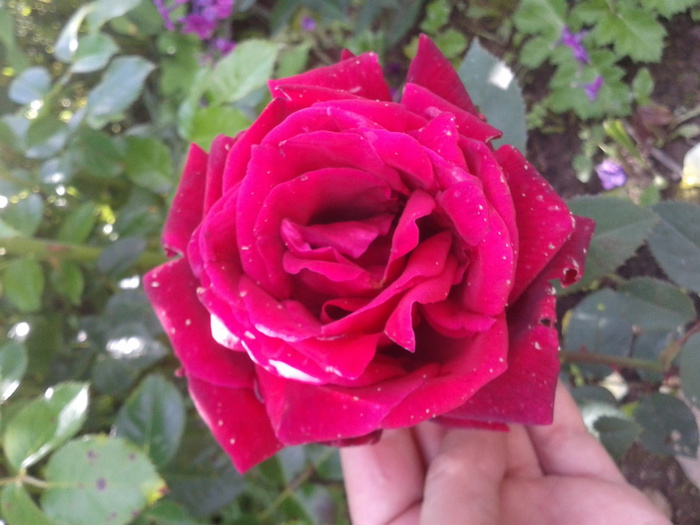
Gloria Day is a world-famous variety, I have 1.2 m, a flower of 10-12 cm, fragrant, rain keeps, the bush is branched, the foliage is healthy, it does not get particularly sick, it blooms profusely. 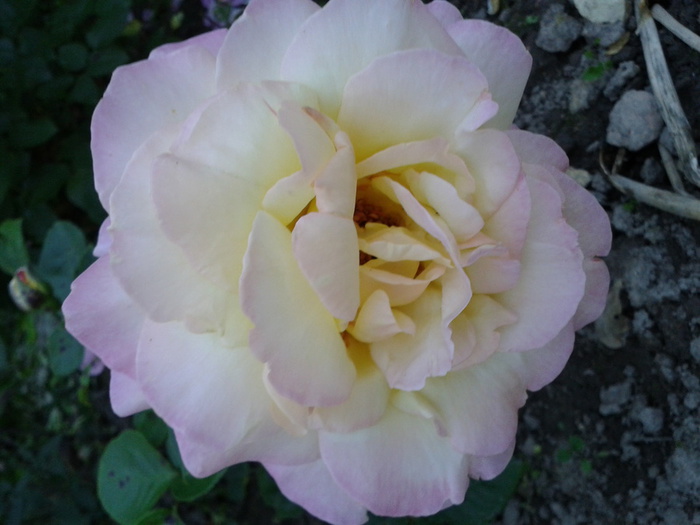
Osiana is a beautiful creamy flower up to 10 cm, the bush is slightly ankle-length, up to 1 m, there is 1 bud on the shoot, like all light roses, it tolerates rain moderately, but the flower is sooo beautiful porcelain, it can suffer from an emergency. 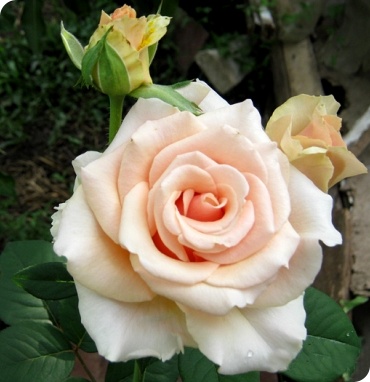
Versilia - also light cream warm rose with an amber tint inside the bud, the characteristics are similar to Osiana. 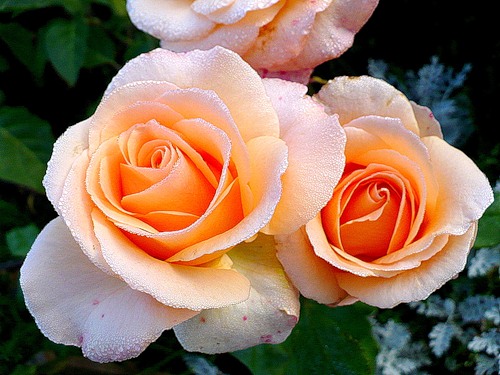
Kronenburg is a very resistant variety, 1-1.2 m, the foliage is healthy, practically does not get sick, the flower is resistant to rain, odorless. I recommend. 
Duftvolke - a healthy bush, up to 60 cm, flower 12 cm, very beautiful shape, wide, very fragrant, juicy red.
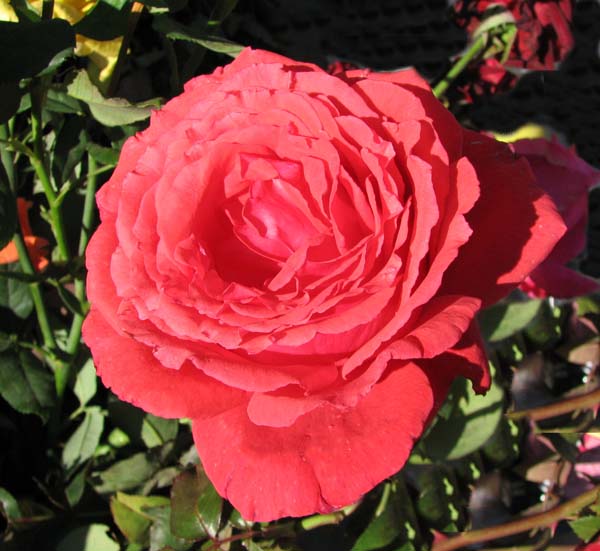
Dufttrauch - a bush up to 80 cm, it can take an emergency, but not fatal), a flower is large 12 cm, beautiful and fragrant, the shade goes into purple and will NOT look with red roses! (That's me just in case) A real tea-hybrid rose in all forms)
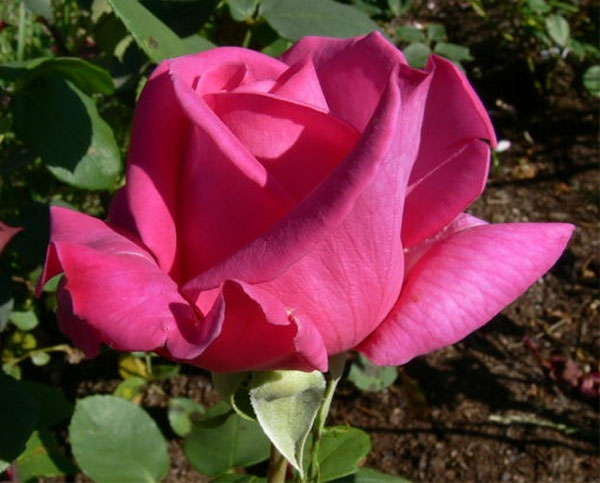
Piano - I wanted for a long time and got it) a bush up to 1.2m, Dark healthy foliage, can give single high shoots, a flower is dark red, densely stuffed, terry old shape, size 6-8 cm, at the beginning it is a "ball" and then it opens, it rains holds, but individual buds can remain so half-opened "ball". A kind of rose externally) But it blooms profusely. 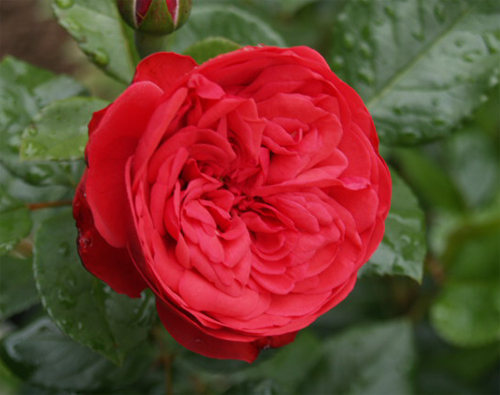
Augusta-Louise is a gorgeous rose in every sense. And healthy, and plentiful, and the color is overflowing, and branches well, fragrant and keeps the rain! Highly recommend to everyone. 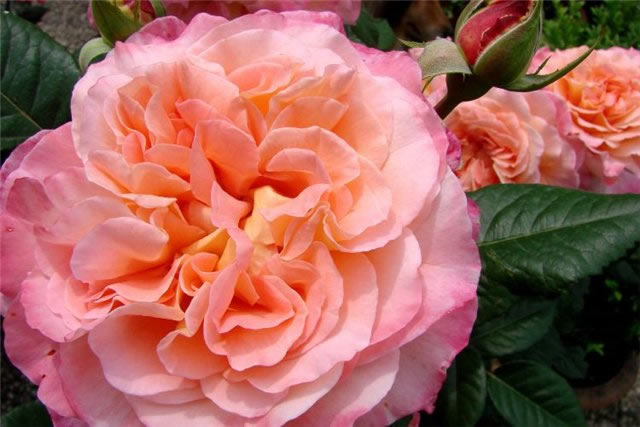
Midsummer - a healthy rose with beautiful dense foliage, a flower of classic warm red-orange tones 10 cm, fragrant, well branched, holds rain, blooms profusely. I recommend. 
Landora is an old proven variety, up to 1m, the bush is ankle-shaped, the foliage is healthy dark beautiful, practically does not get sick, the flower is classic, it opens for a long time, a beautiful yellow-golden creamy color, up to 10-12 cm, the smell is weak fresh, the rain keeps well, on shoot up to 3 buds. Recommend like yellow rose to the flower garden. 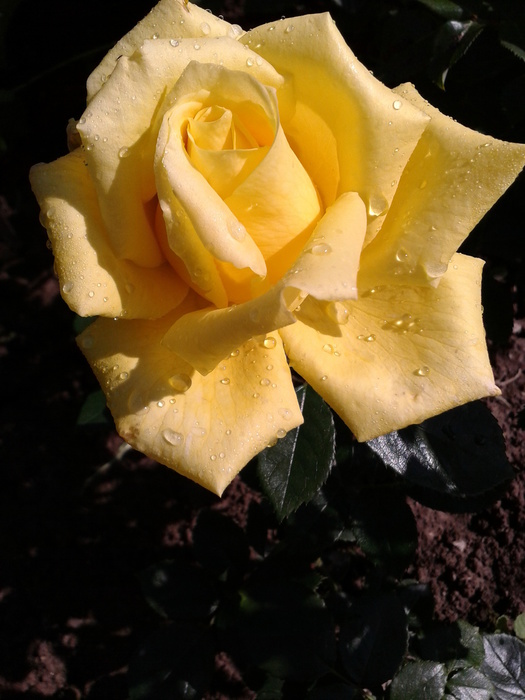
Chicago Peace is a relative of Gloria Day) a large bush up to 1.2m, branched, relatively healthy, a large flower with a slight smell. In the south will show itself in all its glory)
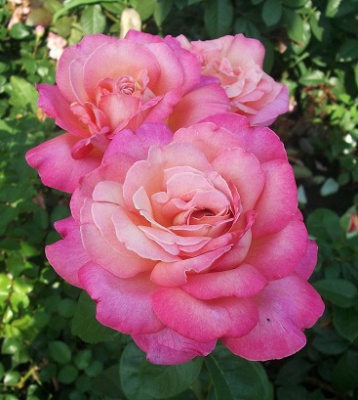
Schwartz Madonna - an excellent beautiful dark red rose, the only negative is that it is odorless, but in all other respects it will outshine many other varieties of such a dark color, the bush is strong, up to 1.5 m high, higher in the south. Flower 10 cm, excellent velvet color, blooms profusely, dense petals, keep the rain. On the run 1 bud. I recommend it as a dark red rose.
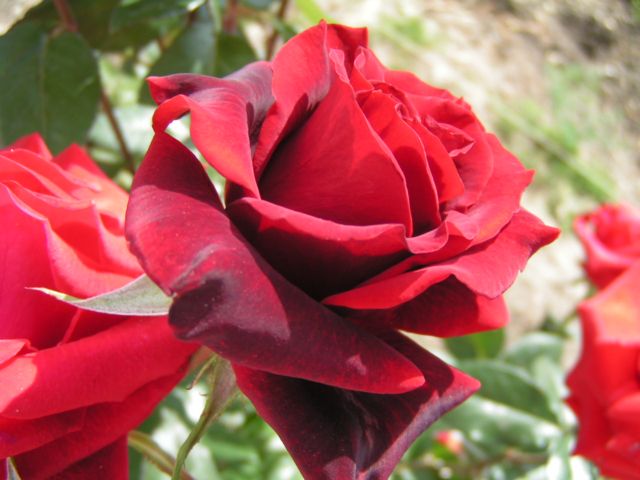
Queen Elizabeth - an old proven variety, large bush up to 1.5m, healthy and strong, flower up to 10cm, odorless, blooms very profusely, endures unfavourable conditions, especially suitable for beginners - will not upset) I recommend it, although there are many pink varieties new, plant and rest)
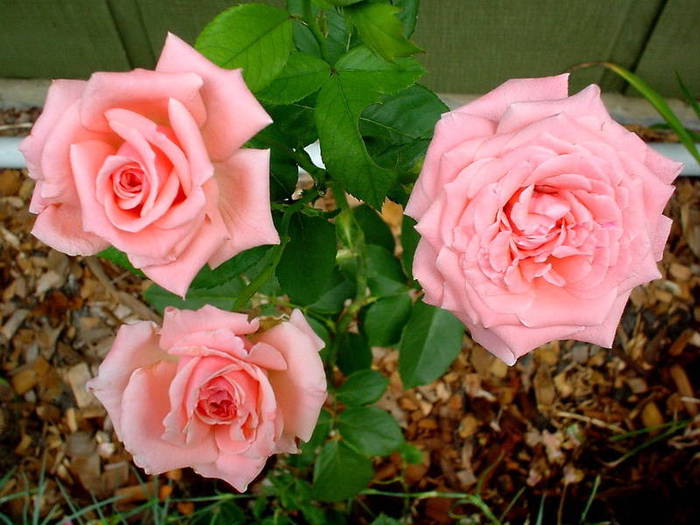
First Lady - beautiful ... even very ... a three-year-old bush is just a masterpiece! bush strong, height up to 1.2 m., higher in the south, fragrant, beautiful flower shape, blooms for a long time. Can appear "hemp" from the rain, but you'll forgive her) I recommend.
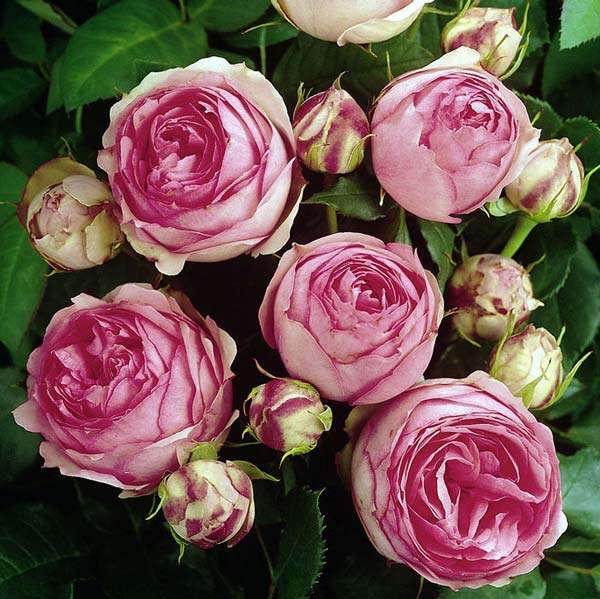
You can talk about many more varieties of these beautiful flowers, but for now let's focus on these. I wish you success and joy in your work! Good luck, dear lovers of beauty! I'll try to tell you next time climbing roses that will delight you with their flowering and beauty.
Unique hybrid tea rose. Royal flowers with an exquisite fragrance are at the forefront of all cut flower cultivations. Luxurious bouquets of these roses are an indispensable attribute of all romantic holidays in our lives.
Hybrid tea roses are also grown in open field. Rose bushes are straight, sometimes spreading, from 70 to 150 cm high. Shoots are straight, even, with dark glossy leaves. Flowers mostly solitary, less often several, up to 12 cm in diameter. The beautiful shape of the bud is in the form of a glass, double or densely double flowers, which can have more than 100 petals. The coloring is varied. They bloom from June until frost, with short dormant periods. In the middle lane, they mainly grow on a rootstock.
Often in the description of these roses, their low winter hardiness and disease resistance are indicated. But there are hybrid tea roses that are in no way inferior in winter hardiness to other groups of roses. However, in the middle lane, where snowless cold winters and unexpected thaws are possible, followed by severe frosts, all hybrid tea roses need shelter for the winter.
The most winter-hardy varieties of hybrid tea roses
Parole (W. Kordes Sohne)- this is just a masterpiece among roses! Bud - a large tall glass of dark crimson color. Flower diameter 15 cm. It has a strong aroma. The bush is upright, vigorous. Foliage is glossy dark green. Blooms profusely all summer. Bush height 80–90 cm. Disease resistance is high. The variety is frost-resistant.
Grand Amore, W. Kordes Sohne- one of the most resistant red hybrid tea roses, tolerates heat and perfectly stands in a vase. Classic tall glass. Does not fade in the sun. Blooms profusely all summer. The variety is winter-hardy, resistant to unfavorable conditions. weather conditions, to black spot and powdery mildew. Bush height 80 cm.
Gloria Day (Meilland)- a rose of unusual color - from light yellow with a beige tint to copper-pink. Blooms profusely all summer. The variety is disease resistant. Winter hardy. Bush height 80 cm.
Memory (Memoire, W. Kordes Sohne)- a snow-white rose with a very large goblet-shaped bud. Flowering is long. The variety is resistant to adverse weather conditions (very hot or rainy summers), black spot and powdery mildew. Although this rose is moderately winter-hardy (the upper parts of the shoots are frosted over), it is worth growing for the largest and long-blooming white flowers. Bush height - 70 cm.
Nostalgie (Tantau) - beautiful rose with a cup-shaped terry bud white color and red border. Resistant to adverse weather conditions (very hot or rainy summers). Blooms almost continuously all summer. The variety is resistant to black spot. Frost resistant. The bush is vigorous and compact, up to 100 cm high.
Eliza, W. Kordes Sohne- soft pink bud with a pearly tint. Blooming flowers are very beautiful, double, large, with a light fruity aroma. Suitable for cutting. Height 90-100 cm. The bush is compact, with dark green foliage. The variety is disease resistant. Frost resistant.
Burgund 81 (Burgund 81, W. Kordes Sohne)- one of the best red hybrid tea roses. Very large bud with a diameter of 12 cm. Blooms all summer. Suitable for cutting. Resistant to adverse weather conditions (hot or rainy summer), black spot and powdery mildew. Winter-hardy variety. Bush height 100 cm.
Beverly (W. Kordes Sohne)- a tall glass of bright pink shade and soft pink outer petals. Large terry bud with rich aroma. Blooms profusely all summer. Suitable for cutting. The height of the bush is 70–80 cm. The variety is resistant to black spot. Frost resistant.
Sebastian Kneepp, W. Kordes Sohne- an unusual tea-hybrid rose with a cupped terry bud. This rose blooms in large inflorescences. The flower is creamy white with a yellowish pink color, 10–11 cm in diameter. The variety is resistant to adverse weather conditions (hot or rainy summer), black spot and powdery mildew. Frost resistant.
Marvel (Marvelle, W. Kordes Sohne)- Attractive striped flowers that are great for cutting. Red, yellow and orange stripes complement each other beautifully in this unusual 10 cm bud. Blooms all summer. The variety is resistant to black spot and powdery mildew. Frost resistant. Bush height 80 cm.
Kupferkönigin (W. Kordes Sohne)- very stable variety with a bright yellow bud. Classic tall glass. Does not fade in the sun. Suitable for cutting. The variety is resistant to black spot and powdery mildew. Frost resistant. Bush height 80 cm.
La Perla (La Perla, W. Kordes Sohne)- one of the most resistant light roses, tolerates heat and stands well in a vase. Bud - a classic tall glass of color Ivory. Does not fade in the sun. Blooms profusely all summer. The variety is winter-hardy, resistant to adverse weather conditions, black spot and powdery mildew. Bush height 80 cm.
cut roses
Roses are cut in the phase of a colored bud with bent sepals, and dense varieties in the stage of a “loose” bud, when the lower petals begin to open. Do not cut closed dense buds, they may not open in a vase and droop. In order not to damage the moisture-conducting vessels, it is better to cut the flowers with a sharp pruner. Scissors crush the shoots and deform them.
It is desirable to cut roses early in the morning or late in the evening, it is best in cloudy weather - at this time the moisture supply in the plant is maximum. It is not recommended to cut the flowers in the heat, because they quickly evaporate moisture and wither.
It is better to take settled water for cut flowers and change it daily, rinse the stems running water, updating slices regularly. Roses do not tolerate direct sunlight, drafts and hot rooms, so it is better to place vases with roses in a cool, slightly darkened place.
Preparing roses for winter
Shelter of roses is a simple job, but it requires some consistency and clarity of execution. Roses should be covered when permanent frost sets in, usually in November. If you cover the roses earlier, the shoots will not be ripe enough, with too soft wood. Light frosts early autumn not only do not harm roses, but also increase their endurance.
It is necessary to remove the entire unripened part of the bush - cut off the young shoots and parts of the shoots that did not have time to lignify. Trim leaves, leaving petioles about 1 cm long. Removed foliage is best discarded or burned. It is not suitable for composting, as it can be infected, for example, with black leaf spot. Tie the stems into a loose bundle and treat with a 3% solution of ferrous sulfate.
Cover the base of the bush with dry earth to a height of 15–20 cm at the rate of 1 bucket of earth per bush. Peat is unsuitable for this, it is highly saturated with moisture and completely freezes in winter, creating a shell under which the rose rots. Sand can also be used only as an additive to dry land. Cover roses with fir spruce branches or non-woven covering material (lutrasil) of white color, 60 mm thick in 2 layers.
rose pruning
The two most important prunings in the life of a hybrid tea rose are:
- after planting - the formation of the crown of the bush during the first year of life on the site;
- in the spring, after the opening of roses - if the crown of the bush is not lush and beautiful enough, or if some of the shoots are lost after wintering.
The rest of the pruning is cosmetic - removing faded flowers, diseased or broken shoots. After August 1, it is very important to cut the fattening shoots in half so that the lower part of the shoot can ripen and become woody before the onset of frost.
Feeding and planting roses
Roses are fed from May to July once every two weeks, alternating organic and complex. mineral fertilizers. From August 1, it is necessary to stop applying nitrogen-containing fertilizers, and apply potash and phosphorus fertilizers - for the timely ripening of young shoots and slowing down the abundant sap flow in the tissues of the shoot.
Most right time for planting roses - spring (from May to June) and autumn (from September to October). It is best to do this on a cloudy day. It is necessary to look in advance for a place for the rose garden. The land must be fertile. Roses do well in the sun, and some varieties in partial shade. If close ground water, then to the bottom landing pit drainage should be provided.
Ekaterina Golenya, rose collector

